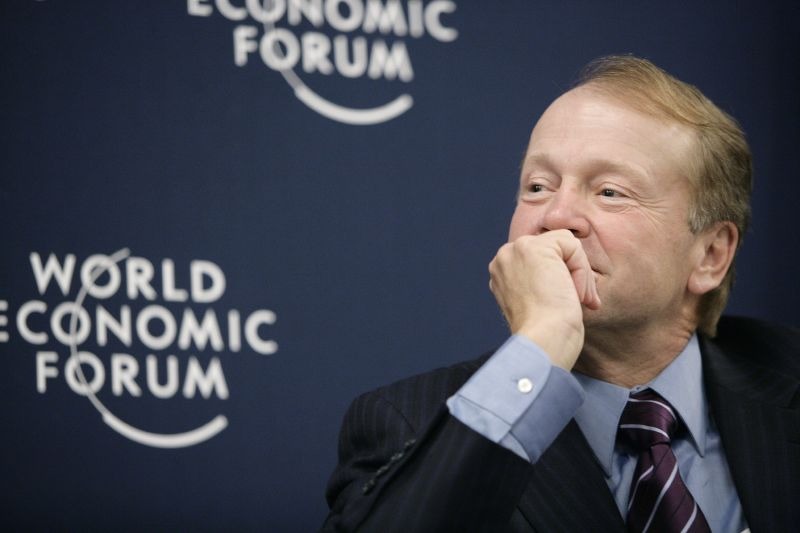Many restaurant executive teams are still planning with post-it notes and ballpoint pens while their competitors are harnessing theories, tools, and techniques that sound like science fiction — big data, machine learning, artificial intelligence, behavioral economics, neuromarketing — to create strategy and allocate budgets.
For far too long, planning has consisted of dusting off last year’s templates and marking up financial projections by 3%. Always doing what’s always been done — which means always getting what’s always been got — is increasingly dangerous.
Today, market share gains most commonly come from stealing from someone else, and last year’s playbook is already archived in competitors’ best practices documents. A third of organizations are moving so slowly that they can’t seize new opportunities or mitigate emerging threats.
Most companies recognize that the old approaches to planning are insufficient and need to catch up with the pace of change in technology and consumer dining behavior.
Don’t get left behind this strategic planning season. Here are five tips for purposeful planning:
1. Develop Rolling 36-Month Plans
No one can see 10 years into the future. If we go back only five years, most people wouldn’t have been able to comprehend how fast the industry has changed. Moreover, most restaurant strategic planning processes have not kept up with the changes. Operations are often state of the art for 2009, not for the 2020s.
While it’s not possible to predict the future, executive teams can increase the probability of success by understanding and watching the variables that may impact it. Though the pace of change has increased exponentially — and will continue to accelerate — companies who approach long-term planning with the belief that they have too much to worry about right now to look ahead will soon wake up with the realization that things have changed faster outside the business than inside.
We advocate a rolling 36-month plan. Short-term planning can create a tremendous amount of volatility, and recent political conversations have proposed doing away with quarterly reporting for publicly traded companies in an effort to increase stability. Incentivizing leaders with solely short-term targets might force executives to ignore longer-term opportunities for the business.
Of course, there are current-year initiatives that optimize performance by reducing cost, improving efficiency, enhancing the guest experience, and building morale and buy-in, but these should not be the sole focus of management teams.
The gains successful companies are getting now come from decisions made years — not months — back. Domino’s Pizza stands out in particular. Patrick Doyle launched the transformation plan in 2010, and stock prices are continuing to grow. Starbucks, Panera, and McDonald’s each provide compelling cases as well.
The gap between the haves and have-nots can be traced to investments in systems, technologies, and planning informed by a robust understanding of the factors that will influence the future of foodservice, from mobile and automated technology to consumer preferences and new labor models.
2. Ask Better Questions to Get Better Answers
Many of the best practices of corporate strategy and annual planning hold true. Frameworks including PESTLE, SWOT, and Five Forces analysis as well as consumer trend research and understanding evolving dining behaviors still have a place in these discussions.
Many new ideas, from fully automated restaurants to dark kitchens serviced by mobile ordering apps, at first seem like the self-indulgent drivel of a corporate strategist. But these are real developments, and their impacts on our global industry can already be anticipated and, to some degree, forecasted. What may get eye rolls today will most likely make bankrolls tomorrow.
Though the kinds of questions posed by traditional frameworks remain useful and important, strategic planning should also include discussions around the forces reshaping the industry, such as:
- Should we make any changes to our portfolio (through acquisition, creation, or divesting)?
- What new innovations fit best with our unique value proposition?
- Are we making it as easy and frictionless for our customers to buy from us as possible?
- How will the push for off-premise dining affect our business model?
- How can we use technology to better connect with and service our guests?
- How can we integrate blockchain and the Internet of Things into our supply chain?
- How can developments in packaging make our organization more sustainable and environmentally friendly?
- What are rivals — long-standing ones in our market and segment as well as start-ups and competition from other sectors — doing to try to claim our market share?
The leaders of tomorrow have answers to these questions and are willing to make investments in projects that sound fantastical today. They recognize that the entirety of the foodservice industry is going to change and have already started not just keeping up with these developments but creating their own innovations that will push the industry further.
Crisp, Clear, Global Restaurant Research
3. Collaborate and Co-Author
A visionary CEO needs support from every stakeholder and shareholder in the organization, and that begins with the board. More than half of executives credit the success of their strategic initiatives to buy-in and support from other senior leaders.
Unfortunately, it can be incredibly difficult to effectively communicate the urgency and opportunity presented by these kinds of investments, and such breakdowns in communication can become incredibly frustrating — and damaging. Ron Shaich experienced just this complication while bringing Panera 2.0 to life. Reading between the lines, it seems likely that he took the company private to avoid scrutiny from shareholders who preferred short-term performance to forward-looking investments.
Ultimately, Panera 2.0 saved customers a decade’s worth of waiting time. Even with case studies like these, Shaich still faced skepticism, and we see this dynamic play out in boardrooms all over the world. While companies recognize that shrinking sales and share mean they need to do something, short-term pressure and scoffing suspicions thwart potential innovations.

Eliminating cognitive biases — the desire to continue on the same path a company has tread for years — is facilitated by management teams presenting a comprehensive and compelling view of where the industry is headed. Gone are the days of Excel spreadsheets with inputs on cost of goods sold, commodity prices, and incremental sales gains are sufficient. They’ve been replaced with more sophisticated scenario modeling, real-time data collection to track historic and present performance and predictive analytics that forecasts into the future.
With these tools, the board and executive leadership can make more informed, long-term capital allocations that can be reviewed frequently and farther out than the traditional annual budgeting process allows.
Restaurant Strategy
4. Resensitize to Innovation
Much of bleeding-edge technology is so advanced that it can move from off the radar to the center of our lives at a pulse-quickening pace. Both mainstream media and trade publications are covering these developments, which sometimes counterintuitively diminishes their impact. Because we see so many headlines about artificial intelligence, big data, and automation, it’s easy to feel confident we know in everything there is to know about them.
Almost everyone would say that robotics and automation will become essential to maintaining performance in the QSR sector in terms of the unit economic model. The challenge is identifying those technologies that can be integrated into the existing business to enhance quality and the guest experience. This demands a thorough understanding of new technology to match the knowledge of current operations, and such a nuanced view requires a willingness to learn, experiment, and — most importantly — be moved by all the potential these innovations offer.
[W]e are looking to build a moat around the business… [T]he better the technology relationships we have with our customers, the more modernized our restaurants become, the harder it will be for people to compete with us.
Steve Easterbrook, Former McDonald's CEO

Crew-level employees need to be learning new skills before they can be replaced by faster, cheaper, and more accurate robots. The kiosk will certainly replace the cashier, but a parallel can be drawn to the restaurant CEO who fails to learn new skills and keep up with the evolving industry.
Where it may have been a disqualifier before, paranoia may become a more sought-after trait among CEOs. And it’s most certainly the case for corporate strategists whose job it is to anticipate and help the company prepare to size, seize, and capitalize on that opportunity.
5. Improve Internal Communication
Any successful plan requires buy-in, and there’s a tremendous opportunity for companies to improve communication both among leaders and throughout the organization. Very few organizations would dispute the importance of communication, but most have cracks in their pipelines — 95% of a typical workforce doesn’t understand its organization’s strategy.
This begins with high-level discussions, where involving employees from all levels and functional areas could surface new approaches. Part of corporate planning should be dedicated to shooting for goals that are impossible by asking, “if it were possible, how would we do it?” When big ideas are presented this way, people begin to scrap steps and systems altogether and design entirely new ways of attacking the problem that allow for quantum leaps in productivity and performance.
Enrolling others in the discussion and decision-making process doesn’t do the whole job: there has to be communication both along the way and after. This is one of the biggest cracks that strategic plans fall through on their way to implementation — a dark crevasse where communication doesn’t happen. Only 42% of managers and 27% of employees get access to the strategic plan, which means that only a minority of an organization knows where the company is headed.
Avoid Death by a Thousand Paper Cuts
With a complete understanding of markets and how things are changing on a global, regional, and local basis, the ability to size, seize, and capitalize on new and emerging opportunities can help catapult a company over the competition faster than either organization knew possible.
Either we disrupt, or we get disrupted.
John Chambers, Cisco Executive Chairman and Former CEO

In fact, that’s part of what’s happening between direct competitors within the industry, as new entrants with emerging technologies (delivery aggregators, dark kitchens, food halls, meal delivery services, and so on) are stealing share in a way that may seem insignificant at first, like a papercut. One stings, but when enough cuts combine, it’s like losing a bucket of blood.
The global foodservice industry is a $3.3t industry, and it’s expected to grow at a relatively predictable pace (with population, inflation, and consumer discretionary spend). But, over the next three to five years, hundreds of billions of dollars of spend within the industry are going to shift to new categories and segments. This means that many of the existing companies are already restaurant zombies — dead, but they don’t know it yet.
The leaders who recognize, anticipate, and plan ahead of this new industrial revolution will not only avoid the fate of dying by a thousand cuts, but they also have the opportunity to contribute to and direct these innovations. It’s undeniable that the foodservice landscape will look radically different in even five years. But who will shape it?
About Aaron Allen & Associates
Aaron Allen & Associates works with global foodservice leaders to find, size, and seize opportunities to drive growth, optimize performance, and maximize enterprise value. Our approach to strategic restaurant planning enables our clients to understand and capitalize on the future of foodservice, as well as anticipate and act against the rapid evolution of disruptive technologies, evolving consumer dining behaviors, and increased competitive dynamics.

